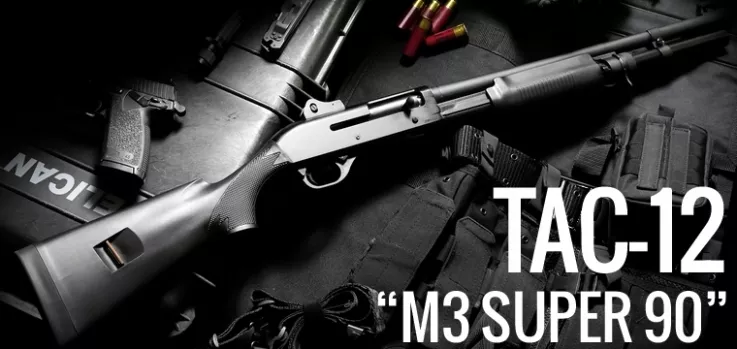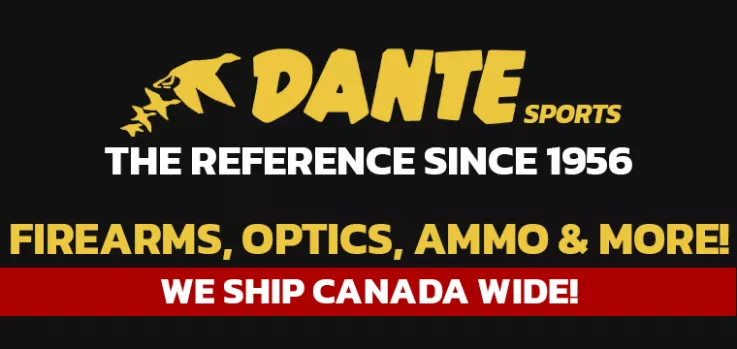Online Safety Tips
1. For Local Face to Face Deals
5. For Sellers Getting Spam Replies (buyer wants to send you a cheque)
6. For when you have a Wanted Ad posted
7. Watch for fake E-transfers to steal your passwords
1. For local face-to-face deals.
First and foremost, we highly recommend face-to-face transactions when possible. We recommend that you buy in person, and in cash. The CFP has received a lot of reports of people being defrauded when trying to buy firearms over the internet. The most common way is that the unsuspecting buyer sends the seller an EMT(email money transfer). Then the fraudulent seller does not ever mail out a firearm. Therefore the buyer is out of their money and has no way of finding the fraudulent seller. Buying in person, and in cash is the best way to avoid being defrauded.
The second reason we recommend buying in person and in cash is so that you will not be disappointed with the condition of your purchase when it arrives in the mail. When you buy in person, you can physically inspect a firearm before you even agree to a final price. When buying and only seeing a digital photograph, you cannot inspect and verify the condition of the bore, crowning, smoothness of the action, and general overall condition.
Many firearm owners have simply used their home as a meeting place to complete their private sales for many years with no issues. For those who are not comfortable with giving your home address as your meeting place when arranging with a buyer, you could suggest a more public meeting place. For example: local shooting range, local gun shop parking lot, piece of Crown land.
If you are going to select a public meeting place, please use common sense in selecting that meeting place. For example: In a busy suburban city, if you choose to meet in a mall parking lot to examine a firearm and complete a sale, there is a high probability that other members of the public will not be understanding of firearms and the culture that goes with it. Those other citizens may call the police creating an unnecessary inconvenience
2. For online deals.
This section is pertaining to deals where you are NOT doing a local face-to-face transaction, and having the item shipped to you.
Read over the member profile information. Read their reviews from other site members. Also look at how long they have been a member. (If they don't have any reviews, that doesn't necessarily mean that they are not trustworthy. They may be new or do not do a lot of buy and sell. This is just one extra measure to help you create an overall assessment of the seller.)
If they don't have many reviews, the number one way to avoid being defrauded is simply to have items shipped to you C.O.D.(cash on delivery) with Canada Post. We recommend that you don't send an E.M.T.(email money transfer) to a stranger(someone without a few reviews to show selling or trading history from other members on the site). Here is the link for info on C.O.D. https://www.canadapost-postescanada.ca/information/app/cod?execution=e1s1. Currently it only costs an extra $7.25 to ship this way. A very small price to pay in order to ensure that your item will actually be shipped to you.
You can find Canada Post's policies on this shipping method here https://www.canadapost.ca/tools/pg/manual/PGpscanada-e.asp#1421368
If the seller will not ship this way, and has legitimate reasons for not wanting to ship this way and insists on EMT, some suggestions for minimizing the risk of being defrauded can include the following;
- Look over their ad carefully. Watch for specific things that should raise warning signs. Such as: Firearms not properly classified in the listing (ex. an AR-15 or handgun classified as Non-Restricted), No phone number listed or phone number with an area code that is not local to that area, or a phone number that is text only or goes to an automated system. (Please note that we have blocked scammers that had ads in several different provinces, and each ad had the correct area code in the phone number. The lesson here is that the correct area code does not guarantee that this seller actually lives in the area that they claim to. There are apps out there that scammers use to create new phone numbers at will with the proper area code and forward the calls to their phone.) Ads that have unusually low pricing should also alert you to proceed with caution. Be cautious if the 'view map' location indicated by the postal code that they list does not line up with their supposed location. Look for images that appear to be swiped from an online source instead of uploaded photos. You can actually do a reverse image search on Google to see if the image was swiped from other websites(Sometimes images that have been swiped still do not show up when searched with Google Reverse Image Search).
- Beware if the seller refuses to speak on the phone. Or if they refuse to meet in person to let you inspect the item before you buy. Even if you don't live around the seller, you can offer to have a family member or friend, who lives in that area come check it out before you buy. If they refuse that offer, they are 95% likely to be an overseas scammer pretending to be here in Canada.
- You should ask the seller to use Skype, or some form of live video chat, in which they can show you that they do have the item that they are indeed trying to sell. If Skype, FaceTime, or some form of live video chat is not an option for whatever reason, have them send you a quick 5-10 second video of the item that you're looking to purchase, and with that item they need to have a piece of paper with yours and their email address written on that paper, with the item up for sale. If they can put all of those things in the same short video, that will verify that they shot that short clip specific to your request, and that the clip was not swiped from someone else who does actually have the item that you are looking to buy. This just verifies that they do actually have what they are trying to sell you. NOTE: NEVER accept photos with notes as described with the item as verification. Scammers have been using Photoshop to crop in notes into the photos with the items. That's why we recommend video clips rather than photos. I have never seen a scammer pass this short video verification test before.
Also note that we have caught scammers using categories other than firearms. We have seen scams for optics and knives as well.
3. To protect your own PAL info
For restricted firearm sales, the buyer just needs to give the seller the name as it appears on the RPAL card, the RPAL number, and the expiry date. You don't need to send a photo of your license for a restricted transfer because when the seller gives the buyer a reference number to call the CFP with, it is the agent on the phone from the CFP which will verify that you are the actual holder of that RPAL. So we don't recommend sending photos of your ID for a restricted firearm sale.
For non-restricted firearm sales, the rules have changed in 2022. Now sellers have to obtain a reference number for each sale which proves that they did check with he CFP that the buyer's PAL is still valid. Part of that new process, the government has certain demands the seller must take 1 of 3 measures to check the PAL before even calling in to verify the PAL, or using their new online PAL verification tool. Below are the 3 methods they accept as legal methods. We will also comment on the best way to proceed from the perspective of the buyer, who is trying to prevent having his identity stolen for the use of illegal activity.
1. For an in person transaction, the buyer can just show the seller the PAL, and the seller can just physically see the card in the buyer's hand, and then contact the CFP to verify that the PAL is still valid. This is great so that you are not sending your photo ID in the form of a photograph, and risking your PAL being used by someone else for illegal purposes.
2. For a remote deal, not in person, where the seller will ship to the buyer. We realize that our current government has made the idiotic suggestion of having the buyer send the seller a photo of the buyer's PAL with his/her driver's license. This is something that should be okay to do with a very reputable seller, who you would not worry about stealing your identity for the illegal usage.
3. But for all other scenarios, ie. a newer seller with less than (10) 5-star reviews. We suggest using the secondary suggestion that the government has deemed as an acceptable practice for viewing a buyer's PAL. Which is to use a live video call, such as Skype, Facetime, Zoom, Telegram or Signal app video chat, etc. In a live video call the buyer can show the seller his/her PAL card, and the seller can view it that way.
***Again, we highly recommend the video call method over sending a photo of your PAL and driver's license, unless it is a seller with several 5-star reviews, who you feel you can trust that this seller would not be out to steal people's ID for illegal purposes.***
4. Report a member
If you find a member who you suspect to be a scammer, PLEASE... Contact us to report it so that we can remove that member from the site. When you do this, hit the 'Report Ad' button on the ad, or please include the following in your email:
- Copy and paste the link for that ad into the email. (If you hit the 'Report Ad' button on that ad, the link will automatically be included in the text for you.)
- Please give us a description of why you think that member is a scammer.
- If you have had dialog with that member through some means outside of GunPost messaging system, please forward us those emails or screenshots, so that we can see for ourselves what the other member has said that would give evidence that they are a scammer. That way we can eliminate hearsay if we see what the other member said for ourselves. Thus we can avoid the risk of blocking an account unnecessarily.
5. Sellers getting spam replies (asking to send you a cheque)
What he is trying to do is send a fake cheque to the seller as payment for the item that is for sale. He will always send the cheque for far too much more money than the agreed upon price. Then he will claim it to have been a mistake on his part, and ask for the difference back. These counterfeit cheques are always very well done, and bank tellers will often not be able to tell the difference until the bank catches it a week or so after they have accepted your cheque, and then the bank will take the funds back from your account.
There are 2 ways in which this fake cheque type of scammer attempts to defraud a seller on the site.
The most common one is where the supposed buyer says he wants to send you a photo of a cheque for you to do a mobile deposit.
The other way is a bit older, and not used very often anymore. But he used to want to mail you a fake cheque.
You can report it to us by by using the "Contact Us" link in the footer on the site. Let us know the profile name of the member in question.
Clearly, it's very rare that anyone would try to pay by mailing a cheque anymore. If you do get a cheque for too much money, you can be absolutely sure that it is a scam. Do not send the individual your firearm or pay back the monetary difference.
I think it's unlikely that anyone would fall for this, but it is annoying to the sellers on this site to have their time wasted by this person messaging them about their ads for sale. So please do report this to us immediately if you receive an message from a new account of this scammer.
6. For when you have a Wanted Ad posted
Lately we have have seen a rise in the number of scam attempts targeting Wanted Ads. Mainly because they have the opportunity to try to scam buyers without posting an ad on GunPost and having to undergo our screening process.
The same safety tips noted in the above sections apply to your screening of a seller when one replies to your wanted ad. Below are some tips we want to emphasize specifically for screening replies to your wanted ad, in priority of highest to lowest in importance.
1. Very first thing you should be asking yourself, or looking into, is if this person contacting you has this same item he is trying to sell you posted on the GunPost site yet.
If you find that the same ad is listed on GunPost already, can you confirm that the person contacting you is the same person who posted that ad?
If he contacted you through our site's messaging system, all you have to do is click the profile name of the person who messaged you, underneath the GunPost header, and that will take you to their profile where you can then click to view their listings.
If they have texted your cell phone, they can easily lie to you and give you the link to another listing on GunPost saying that it is their listing. This is easy to cross check. Just reply to the listing and ask the person if this is the same person who is texting you about your wanted ad. If the answer comes back as "no", then you know that the person texting you about your wanted ad is a scammer.
We actually would recommend that you take your phone number out of your account and/or description, if you have a wanted ad posted. That way anyone contacting you about your wanted ad has to message you directly through GunPost and reveal his account's status(how new or old the account is, good ratings, or no ratings at all)
2. The next thing that you should be doing is a 'Google Reverse Image Search' on any of the photos that this person sends you. As these scammers need to find photos from somewhere to send you. So far, in almost every wanted ad scam attempt the photos could be easily found by doing a Google Reverse Image Search. Therefore, they are a scammer using stolen images from the internet.
3. If the person is texting you, call the phone number! In most of the cases so far, the scammer was using a Text-Now app. Meaning that none of the phone numbers used are real. It is just an app that gives them the ability to text from different phone numbers that are generated by the app. They cannot receive calls at those numbers.
That said, I do know that there are also other phone number apps that will allow the person to receive calls, but usually it is an internet connection, not an actual phone call. So the person sounds distant and it can be fairly obvious that it does not sound like a regular phone call based on the quality and type of sound.
4. If the above factors check out, just simply follow the other online safety tips provided in the above sections of this article. Such as, check the profile for reviews from other members. If no reviews, meet in person if local. If not local, request COD shipping and/or ask for the verification video as we describe in section #2(For Online Deals).
7. Watch for fake e-transfers to hack your emails and accounts
The way it has worked is that the fake buyer sends an email that looks like an E-transfer. But when you click the link to deposit into your bank account, it takes you to another site to make you think you are logging in to deposit the funds. We had one member who did not even enter any info or passwords. Just clicked the link in the email, then clicked to select his bank to deposit into, then got out of it once it started asking for login info. The next day, scammers were sending emails and receiving emails from his email. It took the better part of a day to change passwords, and it was not easy to lock them out for this person.
But if you click the link in a e-transfer email, and land on a login page that is not the same webpage that you always use to login to your bank account, do NOT attempt to login. But inform us right away of the account username you were dealing with, as well as whatever email address they were using.
Better yet, you should set up "auto-deposit" with your online bank account. This way when someone sends you an e-transfer, it goes directly into your account. You are not required to click any links from an email. Having auto-deposit set up will also tip you off to a fake e-transfer when you receive a supposed e-transfer to accept, now that you know it should have been deposited automatically.
We will also take this opportunity to AGAIN mention, do NOT send photos of your PAL to anyone. Only send the info on the PAL and let the other person have to call the CFP to verify that you have a legitimate PAL.



